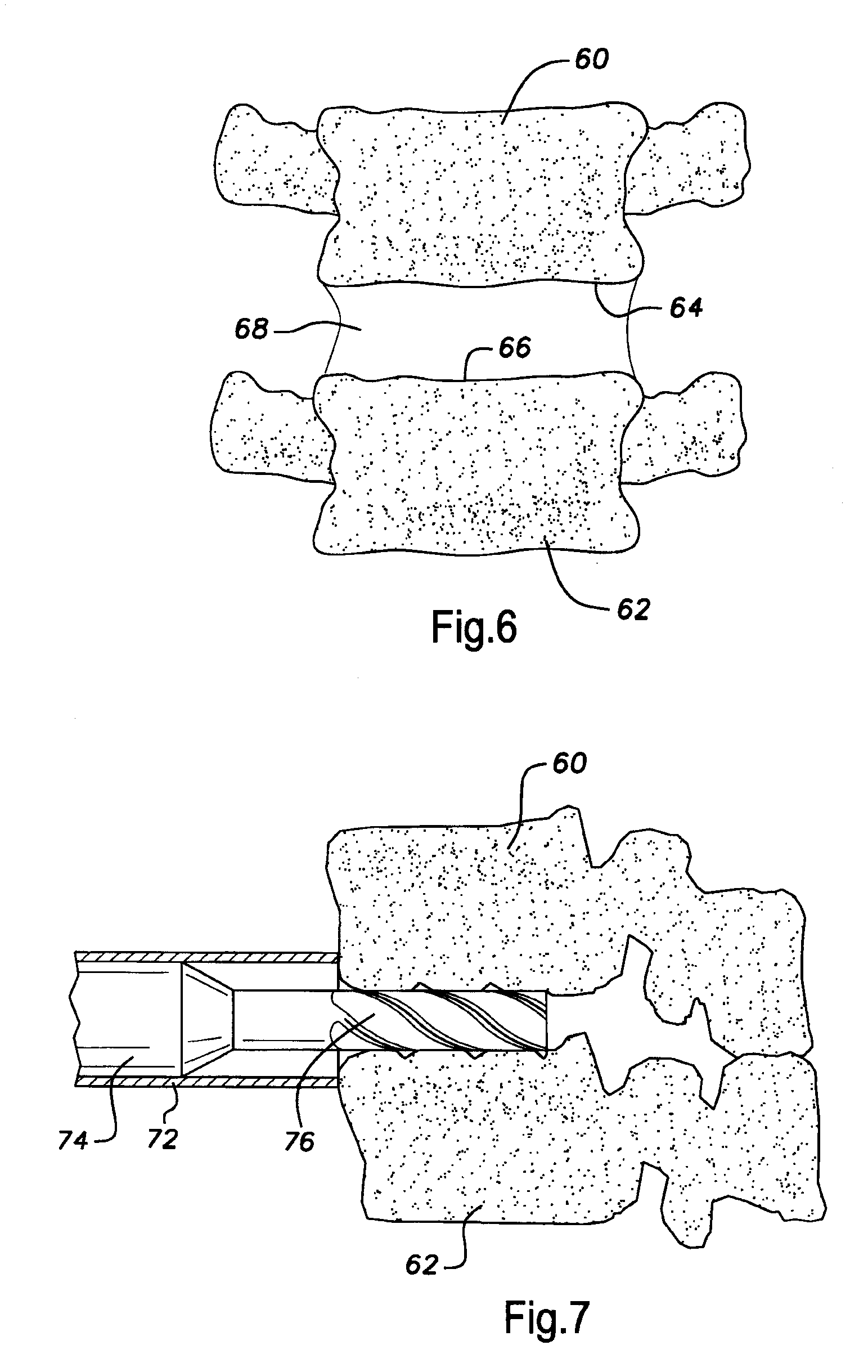Arthrodesis of Vertebral Bodies
a technology of vertebral bodies and spacers, applied in the field of intervertebral spacers, can solve the problems of increasing pain, blood loss, and trauma to patients, and reducing the service life of patients, so as to prevent the migration of spacers
- Summary
- Abstract
- Description
- Claims
- Application Information
AI Technical Summary
Benefits of technology
Problems solved by technology
Method used
Image
Examples
Embodiment Construction
[0037]Referring to FIGS. 1-5, an intervertebral spacer in accordance with the present invention is indicated by the reference numeral 10. While the specific example of the intervertebral spacer 10 described herein is with reference to arthrodesis of vertebrae of the lumbar spine and the sacrum, the invention also applies to arthrodesis of vertebrae of the cervical and thoracic spine. Moreover, although the spacer 10 preferably is installed through an anterior approach to the spine, the spacer 10 also could be installed through a posterior approach to the spine, if desired.
The Spacer 10
[0038]The spacer 10 includes a body portion 12 having a longitudinal axis 14 and anterior and posterior end faces 16, 18, respectively. The spacer 10 is symmetrical about transverse and lateral planes taken through the center of the body portion 12. Thus, either of the faces 16, 18 could be denominated the anterior face or the posterior face. In the embodiment illustrated, the end faces 16, 18 are flat...
PUM
 Login to View More
Login to View More Abstract
Description
Claims
Application Information
 Login to View More
Login to View More - R&D
- Intellectual Property
- Life Sciences
- Materials
- Tech Scout
- Unparalleled Data Quality
- Higher Quality Content
- 60% Fewer Hallucinations
Browse by: Latest US Patents, China's latest patents, Technical Efficacy Thesaurus, Application Domain, Technology Topic, Popular Technical Reports.
© 2025 PatSnap. All rights reserved.Legal|Privacy policy|Modern Slavery Act Transparency Statement|Sitemap|About US| Contact US: help@patsnap.com



